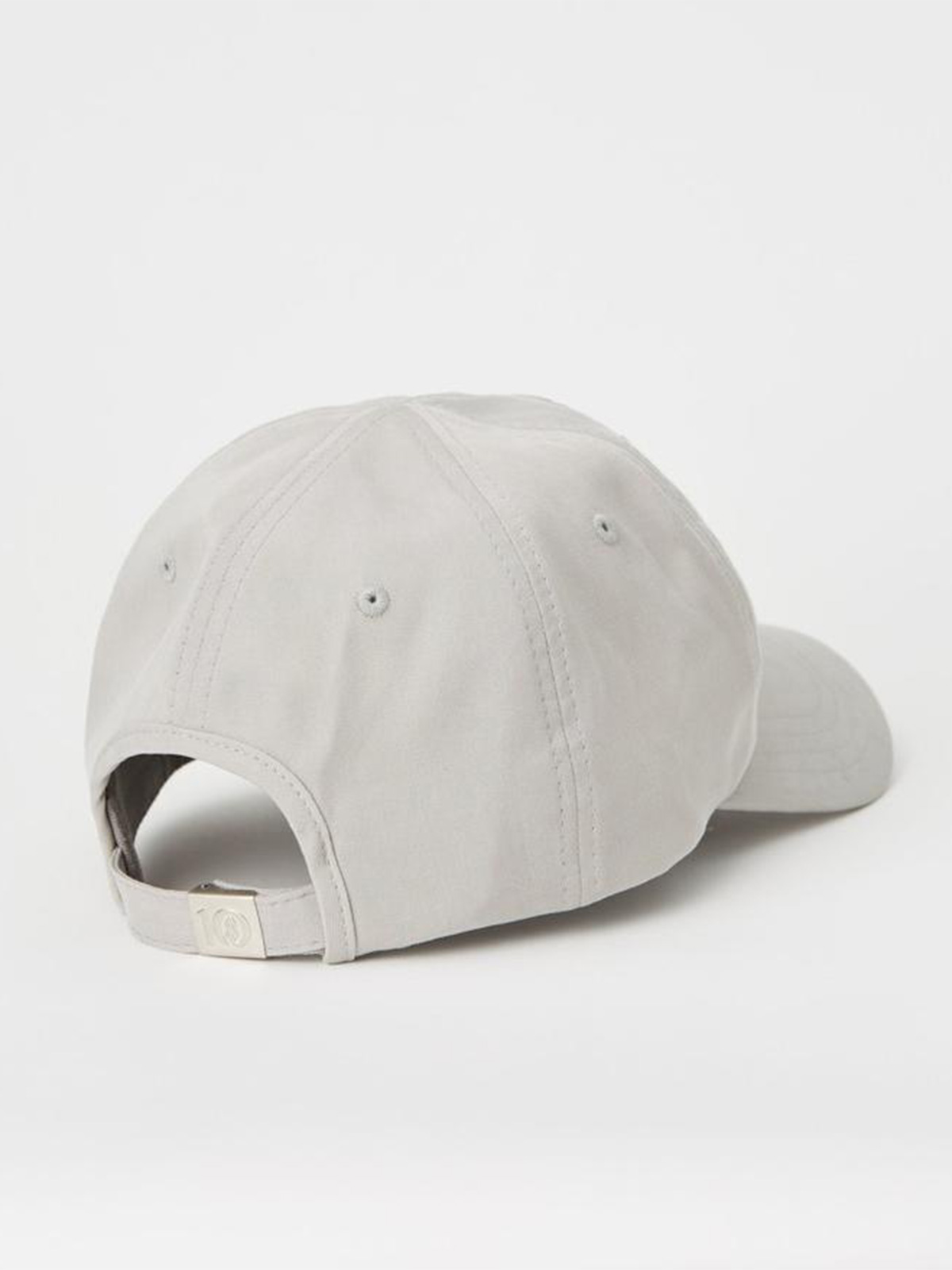Traceability is one of the latest buzzwords in fashion. Understanding what it means is essential for holding brands accountable.
What is traceability, and why does it matter?
Ever tried to separate a pile of tangled necklaces? It’s nobody’s idea of a good time. Now imagine trying to untangle a pile of necklaces in the dark while the only person with a torch refuses to switch it on. That’s kind of what the challenge of traceability looks like in clothing manufacturing.
Perhaps it’s a chaotic analogy, but then so are fashion supply chains—famously knotty and frustratingly opaque, tying up countless people in the global pass-the-parcel of textile production. For years now, a “Made in…” label is the closest we’ve gotten to understanding the story of who made our clothes. But that’s barely even an introduction.
Enter: traceability. Like transparency, traceability is one of many buzzwords currently being flung around sustainable fashion conversations and peppered through Corporate Social Responsibility statements. At a high level, traceability means knowing where and how every single part of a garment was made. It’s the tool with which we both untangle those supply chains and shine a light on their problems.
But as with many jargony words in the fashion industry, the language of traceability can be too easily co-opted by big brands with less noble intentions. And this is far more than semantics. Without precision in defining what “traceability” means, it’s too easy for brands to claim they’re being sustainable without fundamentally addressing their impacts. That’s why it’s important to untangle traceability from the latest trends in corporate greenwashing.
Is traceability the same as transparency? Not quite
“Traceability is related [to transparency] but different,” explains Ciara Barry, Policy and Research Coordinator at Fashion Revolution, the organisation whose #WhoMadeMyClothes and #WhoMadeMyFabric campaigns have been pushing for answers since 2013. “In theory, a brand could have full supply chain traceability (because they have visibility on every stage where their product is made) yet have no transparency of this information if they withhold it from the public.”
In theory, a brand could have full supply chain traceability (because they have visibility on every stage where their product is made) yet have no transparency of this information if they withhold it from the public.
Ciara Barry – Policy and Research Coordinator at Fashion Revolution
Likewise, we often see brands claiming to use “sustainable” fabrics, “eco-friendly” production, or unnamed suppliers who are “like family to us!” as the marketing copy often goes, without providing any actual details to prove it. So if transparency equals telling us where their clothes are made, then traceability means showing the receipts.
Or to misquote an immortal “Friends” episode, it’s not enough for us to know they know. We need to know everything they know—and what they don’t know, too.
Fashion still gets away with not revealing its sources
Too often, sustainability claims focus only on “first-tier” factories—where the cutting, sewing, and trimming occurs. But that isn’t the whole story of a garment any more than a McDonald’s kitchen is the whole story of a burger. What about the trims themselves; the threads, the buttons and zips? What about the raw materials spun into that fabric—where are they grown, and by whom? Every cotton boll picked, every chemical poured, every blob of metal melted down and turned into a fastening that involves human hands and planetary costs.
It’s a lot, and very few brands are giving us the whole picture. Last year’s Fashion Transparency Index revealed that 47% of surveyed brands published a list of their first-tier manufacturers, only 27% published info on factories beyond the first tier, and a paltry 11% of brands published anything about who is supplying their raw materials at all.
Unlike the food industry, which is often subject to stringent regulation and dedicated government departments, fashion brands can still get away with not revealing their sources. Yet raw materials are the ingredients that go into our clothes, and their ethical cost can be the highest of all.
“At the lowest levels of the supply chain, there is the least transparency and the most risks socially and environmentally,” notes Barry. Think about it this way: if a Michelin-starred chef prepared you a Pot Noodle, would that make it a Michelin starred meal?
Last year’s Fashion Transparency Index revealed that 47% of surveyed brands published a list of their first-tier manufacturers.
One brand that isn’t afraid to show its workings is the Swedish brand ASKET (not to be confused with Arket), which has made full traceability—“from farm to finish line”—its mission since 2018 and currently claims to be 93% traceable overall.
Even with a modest collection of fewer than 40 products, ASKET still has more than 600 processes and global locations to account for. So when you consider that SHEIN, at the time of writing, features 458,706 products in its womenswear section alone, the maths becomes mind-boggling.
Identifying every link in every supply chain for an ultra fast fashion brand would be like counting grains of sand on a beach. No wonder they’re reluctant.
Watch out for greenwashing brands claiming “traceability”
What’s more, there’s the danger that traceability could be used as its own kind of greenwashing; brands flaunting the information they do have to distract us from all the blanks yet to be filled.
Case in point: Boohoo, which proudly announced in September 2021 that it was publishing its Global Supply Chain, a list of around 1,100 factories across 30 countries. It’s a huge document but far from complete, featuring no second-tier manufacturers, fabric mills, or other raw material info. Funnily, they didn’t mention that in the press release.
“Many fashion companies are claiming to be transparent, and some publish lengthy reports in a bid to support these claims. However, despite such reports sometimes comprising hundreds of pages, they often contain surprisingly little meaningful information relating to supply chain traceability and monitoring,” says Kate Hobson, ratings analyst at Good On You. “Providing incomplete information in the name of transparency is, without doubt, greenwashing.”
“While it’s good to see brands tracing the final stages and cut-and-sew operations of their supply chains, it’s important to remember that supply chains do, in fact, expand far beyond this stage and implicate thousands more workers,” she says. “Public disclosure of supplier names is of limited use without brands providing evidence of good environmental and social practices at these facilities.”
Providing incomplete information in the name of transparency is, without doubt, greenwashing.
Kate Hobson – Ratings analyst at Good On You
It’s important to remember that—same as transparency—traceability doesn’t necessarily guarantee sustainability. Rather, it’s a means to an end, shining that torchlight into the murky world of fashion manufacturing so we can see what’s up.
“Transparency promotes accountability, but transparency must be complete and consistent. Brands have a responsibility to both disclose supplier information throughout their supply chains, and to provide evidence which proves that the practices of suppliers are being monitored,” Hobson says. “When you’re only sharing the kinds of information you want to, or that benefits you as a brand, that’s not full transparency. That’s confusing to consumers and does not lead to meaningful progress.”
Why fast fashion supply chains are so hard to trace
Fast fashion and the newish wave of ultra fast fashion brands will never truly be sustainable while producing the volume of clothes they do at the breakneck speed they do. Not just because fast fashion eats up too many resources at one end and creates too much waste at the other, but also because, as Ciara Barry explains, “high turnover of stock or product ranges means a brand’s supply chain is in constant flux.”
New suppliers are more likely to conceal problems from potential clients, while chasing microtrends means brands should, in theory, start mapping their supply chains all over again every season.
Meanwhile, the relentless churn and impossible turnaround times have made it common for garment factories to outsource work to other factories (or countless informal homeworkers) while brands turn a blind eye. When familiar labels emerged from the rubble of the Rana Plaza disaster, the most common defence was “we didn’t know.”
Traceability info needs to be accessible to consumers
If tracing supply chains is tricky for brands, then it can be next to impossible for consumers to get to the truth. Often we’re relying on deeply buried web pages, outdated PDFs, and other formats open to human error and human laziness—not to mention human lies. In February, the New York Times reported that much of the cotton currently being sold as “organic” could be faking its credentials, thanks to “an opaque certification system rife with opportunities for fraud”.
This is where tech could help. Innovations like smart clothes tags and FiberTrace have been hyped as the future of a traceable industry for a while now, while public tools like the Open Apparel Registry are already simplifying the process. And another favourite buzzword, blockchain, could play a vital role in mapping supply chains and tracking products through their whole lifecycle, keeping information up to date and safe from tampering.
Ultimately, traceability needs to be easy for the average shopper to access and understand, or else we’re back at the knotty necklaces again.
Ultimately, traceability needs to be easy for the average shopper to access and understand, or else we’re back at the knotty necklaces again. But until the fancy tech arrives, it’s crucial that brands roll up their sleeves and do the work in the present.
“We do not want brands to wait for the new technology solutions to start mapping their supply chain,” says Barry. “It is possible for them to establish full supply chain traceability and disclose this information already.”
A glimmer of good news is that more brands are taking steps in that direction, even if the numbers aren’t all that inspiring. Fashion Revolution’s Transparency Index found overall traceability scores are up from a dismal 8% in 2017 to a better-than-nothing 19% in 2021. But there’s a long way to go before every person and every process in every supply chain is accounted for.
Most experts will attest that we need tighter regulation and comprehensive government legislation to make “we don’t know” a crime, not a valid excuse. At the time of writing, the 2022 Fashion Sustainability and Social Accountability Act being considered in New York is one such example.
Until then, it’s down to shoppers—citizens—to check brands’ track records, keep demanding more detail and banging the drum for answers. Knowledge is power, after all.



















